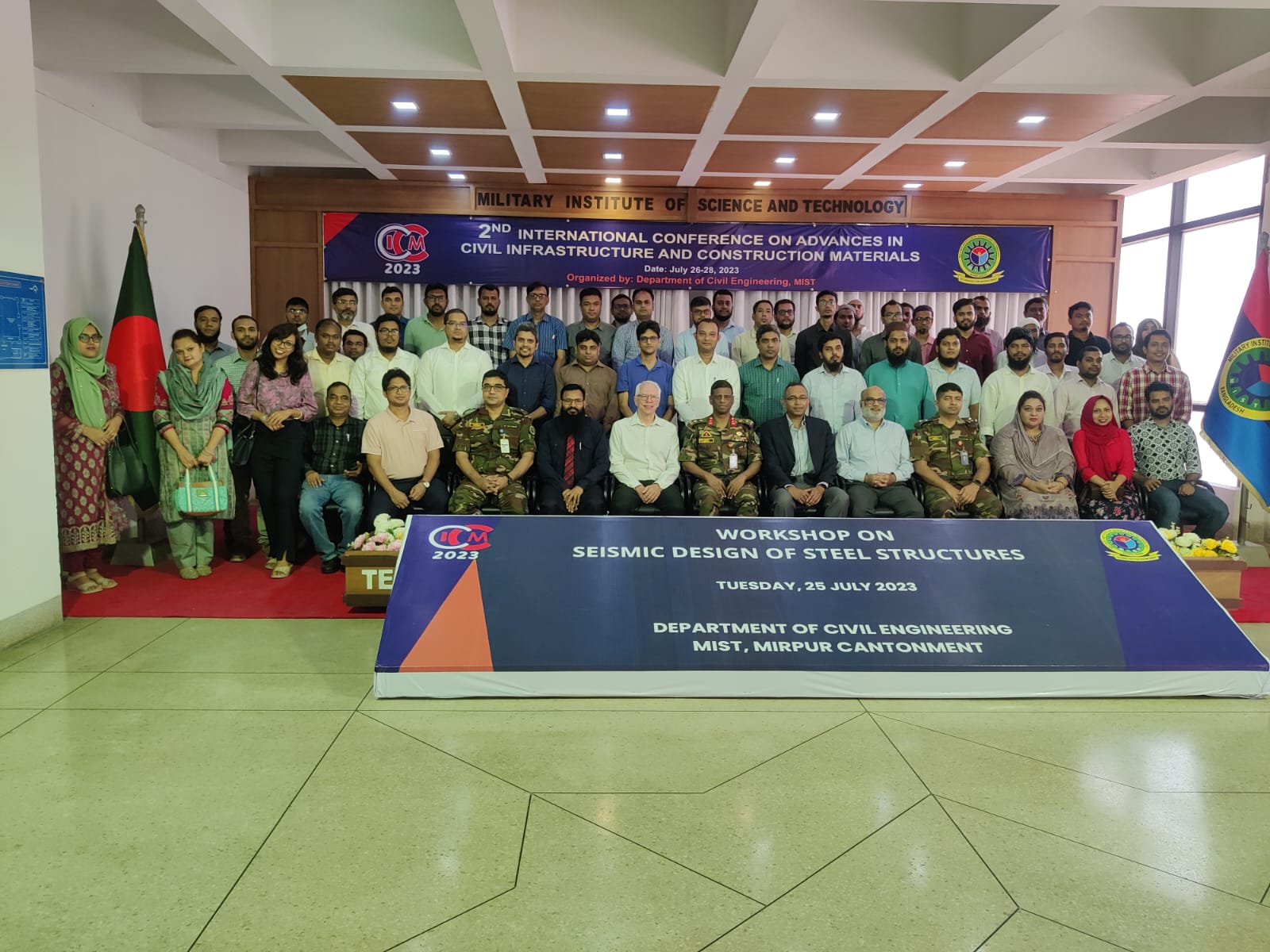Workshop on Seismic Design of Steel Structures (25th July, 2023)
In regions prone to seismic activity, the importance of robust and resilient infrastructure cannot be overstated. For civil engineers and structural designers, understanding the intricacies of seismic design is crucial to protect human lives and mitigate property damage during earthquakes. Acknowledging the significance of this knowledge, the Military Institute of Science and Technology (MIST) hosted a Workshop on Seismic Design of Steel Structures which is held on 25th July, 2023. Professor Dr. Robert Tremblay and Professor Dr. Shahria Alam are the speakers who conducted the seminar.
Key Themes and Topics:
- Building Geometry and Gravity Loads
- Seismic Loads and Analysis
- Seismic Design of Special Concentrically Braced Frames
- Seismic Design of Buckling-Restrained Braced Frames
- Seismic Design of the Special Moment Resisting Frames
- Software training
Hands-On Workshops and Simulations:
The workshop's practical approach allowed participants to engage in hands-on activities and simulations, enriching their learning experience. Interactive sessions focused on seismic response simulations, design exercises using structural analysis software, and practical demonstrations of seismic retrofitting techniques. These activities empowered participants to apply theoretical knowledge to real-world scenarios, preparing them to tackle seismic challenges in their professional careers.
The Workshop on Seismic Design of Steel Structures held at MIST served as a vital platform for advancing seismic resilience in the field of civil engineering. Attendees left with a deeper understanding of seismic design principles, armed with tools and knowledge to create safer, more robust steel structures. Through this transformative event, MIST demonstrated its commitment to promoting sustainable and disaster-resistant infrastructure, contributing to the development of a safer and more resilient built environment. As participants return to their respective roles, they carry with them the imperative to implement seismic design best practices and contribute to a future where communities can withstand the forces of nature and thrive even in seismic-prone regions.

